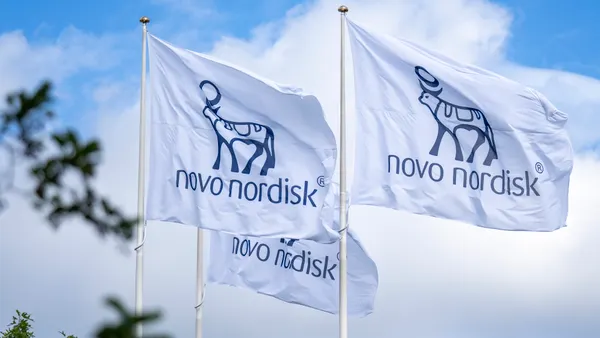Innovation Drakeman. The engine that drives growth in the pharmaceutical industry is the discovery of new medicines for unmet medical needs. Much of the innovation in development now resides in the biotech sector. The challenge is to find the most efficient and productive ways to combine biotech’s innovation with the pharmaceutical industry’s strengths in research, development, and marketing. Scozzie. Some of the best new innovations are coming from the young companies. Perhaps big pharma should take a closer look at the innovation/entrepreneurial approaches of some of these companies to extract learnings. Another issue is the need for “big winners.” This means a lot of smaller product opportunities, which could become big, either aren’t being pursued at all or are not being pursued in a timely fashion. There is a need to reconcile development and regulatory more closely with the opportunity and let some of these nonbillion-dollar products get to the market. Love. Without a doubt we have our work cut out for us in sustaining product flow by developing truly innovative compounds for unmet medical needs. Everyone — from analysts to doctors to patients to payers — wants innovative products, but the systemic cost pressures are coming at a time of increasing research, development, and regulatory complexity. Tillett. The reality of innovation is that it is inversely proportional to company size. It is extremely difficult for even the best large company to create, nurture, and maintain an environment of innovation. Innovation by its nature is risky and large companies don’t like taking risks. Smaller organizations (for a variety of reasons) are more willing to take those risks and go for the big prize. The other problem is the “blockbuster” model. It means that too many innovative new ideas are left behind because they don’t fit the model. Savello. For new product innovation opportunities, the industry must look to therapeutic areas where there are medical needs such as neurology, cancer, inflammatory diseases, and metabolic diseases. These diseases are pathologically very complex and of varying and complex etiology. The advent of genomics is perhaps one of the more important tools in discovering this new generation of drugs to treat these very difficult diseases. But, it is still early and the full benefit of this technology has yet to be realized. Understanding disease complexity at the molecular level is the only hope we have to discover new medical interventions to alter these disease processes. S. Levy. A longer-term trend that hints at the end of blockbusters is the rise of personalized medicine. Many physicians, researchers, and regulators envision a bright future in a pharmaceutical industry where there are fewer one-size-fits-all medicines and many one-size-fits-one therapies. Pharmacogenomics promises to help this evolution. One way of achieving personalization is to identify the genotypes in common with super-responders, regular responders, nonresponders, and those patients who are likely to have increased side effects from a drug. This will improve care and reduce medical errors by identifying which drug will be right for each patient. The problem is that fragmenting the market may not work with the blockbuster model as it is today. As the progress of pharmacogenomics is gradual, the industry will be forced to change. Those companies that are proactive about personalized medicine will lead. Nancy Turett Edelman The nexus of healthcare and technology is where some of the most exciting and important R&D advances are happening. Terms such as healthcare and technology are just convenient ways to classify businesses. By shedding traditional definitions, we’ll see that the future is where these fields intermingle. What’s Your Opinion? 2005 — A look ahead What are the most significant business challenges you believe the industry will face in 2005? Pricing — a mob mentality 2005 may very well be the year of pricing. There’s a mob mentality regarding U.S./international price differences, importation, and the “no price negotiation” clause in the Medicare prescription drug benefit. Pricing is the way life-sciences companies capture the value they work so hard to produce. Their success, and ultimate survival, will depend on their pricing ability. Pricing won’t get any easier in 2005. Healthcare providers and public/private insurers are rolling out new and creative ways to get companies to start price wars. Others will use the media and public outcry to try to force pricing concessions. Companies that are best able to get stakeholders to believe in the value of their products and to understand the value-price connection will be least likely to fall victim to the angry mob. David Webster President The Webster Consulting Group Inc. Dr. Thomas Wicks Odyssey Pharmaceuticals Inc. The industry must address how to continue treatment innovation while limiting costs. One solution to the situation is to increase collaboration among international companies. For new product innovation opportunities, the industry must look in therapeutic areas where there are medical needs, such as neurology, cancer, inflammatory diseases, and metabolic diseases. These diseases are pathologically very complex and of varying and complex etiology. Dr. David Savello Cardinal Health Inc. Dr. Donald Drakeman Medarex Inc. Much of the innovation in pharmaceutical development now resides in the biotech sector, and the challenge is to find the most efficient and productive ways to combine biotech’s innovation with the industry’s strength in research, development, and marketing. Michael Bonney Cubist Pharmaceuticals Inc. We are on the cusp of the next great wave of innovation. The mapping of the human genome and the tools that have been developed as part of that effort hold great promise. But that promise is threatened by an increasing cost of capital. Bruce Peacock Adolor Corp. Many physicians, researchers, and regulators envision a bright future where there are fewer one-size-fits-all medicines and many one-size-fits-one therapies. Pharmacogenomics promises to help this evolution. Steven Levy Fletcher/CSI
An article from


Innovation
Filed Under:
Research & Development










